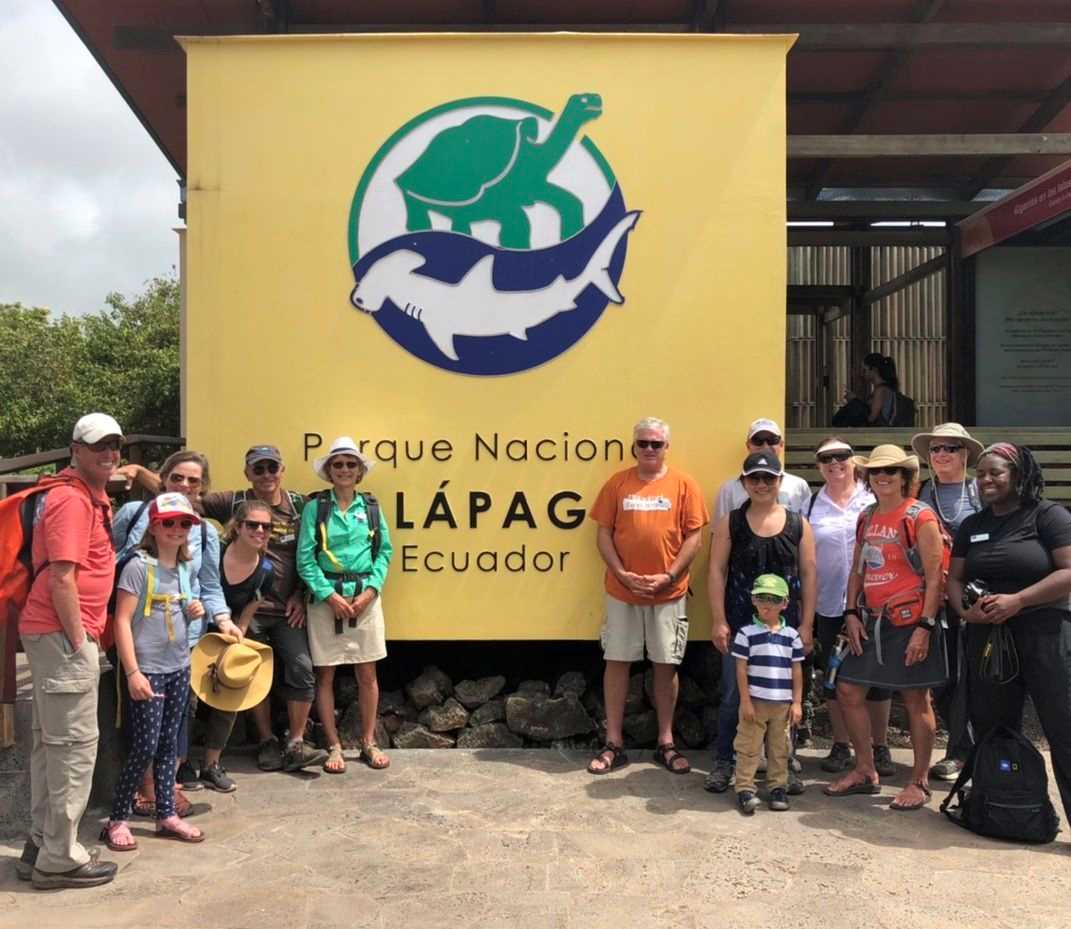We started our morning with a misty Zodiac ride to the second largest and most populated island in the archipelago, Santa Cruz. This island was like no other we had experienced. The bustling town full of familiar sounds of locals on their way to work and tourists exploring the area: all welcoming contrast to the natural environments we‘ve been experiencing all week.
Once on shore, one could not help but notice the stark difference between the city landscape and the habitats that are unique to the Galapagos. With our guides, we boarded the busses that transported us to the Galapagos National Park Service. After a short walk, we arrived at the Charles Darwin Research Station. Our naturalist, Juan Carlos, provided us with an in-depth description of the giant cactus. These cacti resemble trees in that they too have trunks and can grow quite tall. However, their interior is not solid in nature, but rather, it is made up of a sponge-like fibrous material. The highlight of this visit started with observing the infant tortoises. Although these tortoises range from two to four years old, they are still quite fragile and require extensive protection to ensure their safety.
After visiting several giant tortoises and the famed, encapsulated Lonesome George, we divided into two groups. While some guests enjoyed the traditional sugar cane mill located in the highlands, as Grosvenor Teacher Fellows, we opted to visit the Tomas De Berlanga School. There we learned the similarities and differences between the Ecuadorian Educational System and those in our respective countries. This unique bilingual academy is made possible in part due to funding provided by Lindblad Expeditions and National Geographic. Visitors could not help but notice how the inviting natural landscape is a central feature of the school’s design. After an introduction by the principal, students of the school took us on a tour and answered our questions. It was only befitting for Halloween that we next dined at Alquelarre – a restaurant whose name translates to “witch’s coven.”
Our afternoon concluded with a picturesque bus ride deeper into the highlands to visit Chato II Ranch and the giant tortoises that migrate there. We took pictures with these massive creatures that give the Galapagos its striking name. Many of us spent time in Santa Cruz shopping before boarding the Zodiacs to return to the ship. At recap, we were gifted by the presence of a scientist from the Charles Darwin Research Station. She provided us with new research on the vampire fly, as well as innovative strategies the station is exploring to combat their negative impact on the mangrove finch population. We concluded our memorable day with a Halloween-themed dinner and a traditional Ecuadorian concert and performance by a local band.






